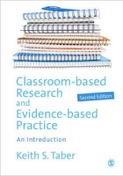Educational Research Methods

A site to support teaching and learning...

Plagiarism
This is a personal site of Keith S. Taber to support teaching of educational research methods.
(Dr Keith Taber is Professor of Science Education at the University of Cambridge.)
2016-2017
Plagiarism is the process of presenting as original something that is actually derivative. Usually plagiarism involves presenting someone else’s work as your own. Plagiarism is considered unethical, and scholarly malpractice, and can lead to serious consequences (for serious cases students may fail assignments or even be removed from programmes of study, and academics can be dismissed from their posts).
Plagiarism is normally understood as a deliberate act of deception, but may also result from poor scholarship.
Plagiarism is related to, but quite different from, copyright infringement. The latter is a legal matter, and the former an academic matter.
Plagiarism involves presenting someone else’s ideas as if they are you own. (A kind of stealing of someone else’s intellectual work).
Good scholarship
Scholarly conventions require that scholars acknowledge the sources of ideas they write about, using standard conventions (footnotes, citations, bibliographic details according to the normal conventions of the specific field). This is usually only possible when the scholar is careful to keep organised and clear notes of ideas they meet in their reading (or attending or viewing talks, etc.) This avoids to potential for forgetting when an idea came from, and of the need to cite the course.
Good scholarship tends to draw on direct quotation from other source in a limited way (except where explicit;y critiquing a text etc), but in any case uses standard conventions to make it very clear to readers when a source is being quoted rather than just cited. This usually means using inverted commas to denote quoted test within a paragraph, or displaying a longer (≥ 40 words) quote as a separate indeed paragraph, perhaps in a distinct font or point size: so use
In either case, citations to bibliographic details need to be made (usually using the name, date convention, and including page references for direct quotations).
Complications
There are a number of complications in evaluating plagiarism.
-
•Scholarly progress within any programme of research requires immersion within the conceptual, linguistic and methodological norms of the field, and it is expected that scholars build upon the work others…
-
•…and over time (especially decades, centuries) some ideas once seen as offering new thinking become adopted as part of the common background knowledge assumed by all in a field (modern chemists are not expected to offer a citation when they use the concept of the atom or of an element)
-
•Ideas reside in minds, and are not open to direct observation by others.
-
•It is not always easy to judge whether someone’s idea is substantially different to someone else’s idea.
-
•Different people can independently come to much the same idea - especially when exposed to the same cultural context.
-
•Much (most) cognitive process of ideas we have read and heard, and their integration into our thinking, takes place at a preconscious level, not available to introspection. Much plagiarism may be unintended and takes place without the offender being aware!!
Gross plagiarism
Despite these complications it is sometimes found that work submitted fro examination or for publication includes material that is in effect cut/copied and pasted from other works. This may infringe copyright, as well as being scholarly misconduct. The use of excessive quotations in place of the author’s own argument suggest incomplete or poor scholarship. The use of unattributed quotations mixed into the author’s own text is gross carelessness or deliberate cheating. (The defence that ‘I did not intend to cheat, I am just a really sloppy scholar’, may be convincing, but does not offer any reassurance.)
Self-plagiarism
Whether one can actually plagiarise oneself, or the term strictly applies to taking other people’s ideas, there are usually rules that the same (student) work cannot be submitted for examination more than once and that published material cannot be reused in further publications. They may sensibly be overlap between different works (for example several papers reporting different aspects of the same project) but efforts should be taken to limit overlap as much as possible, and be careful not to use the same text in several publications (if copyright has been assigned or licensed to a publisher). Full citation to earlier work help everyone appreciate the extent to which a new publication is genuinely new rather than a rehash.
Taber, K. S. (2013). Classroom-based Research and Evidence-based Practice: An introduction (2nd ed.). London: Sage.
standard conventions to make it very clear to readers when a source is being quoted rather than just cited. This usually means using inverted commas to denote quoted test within a paragraph, or displaying a longer (≥ 40 words) quote as a separate indeed paragraph, perhaps in a distinct font or point size (Taber, 2017)
